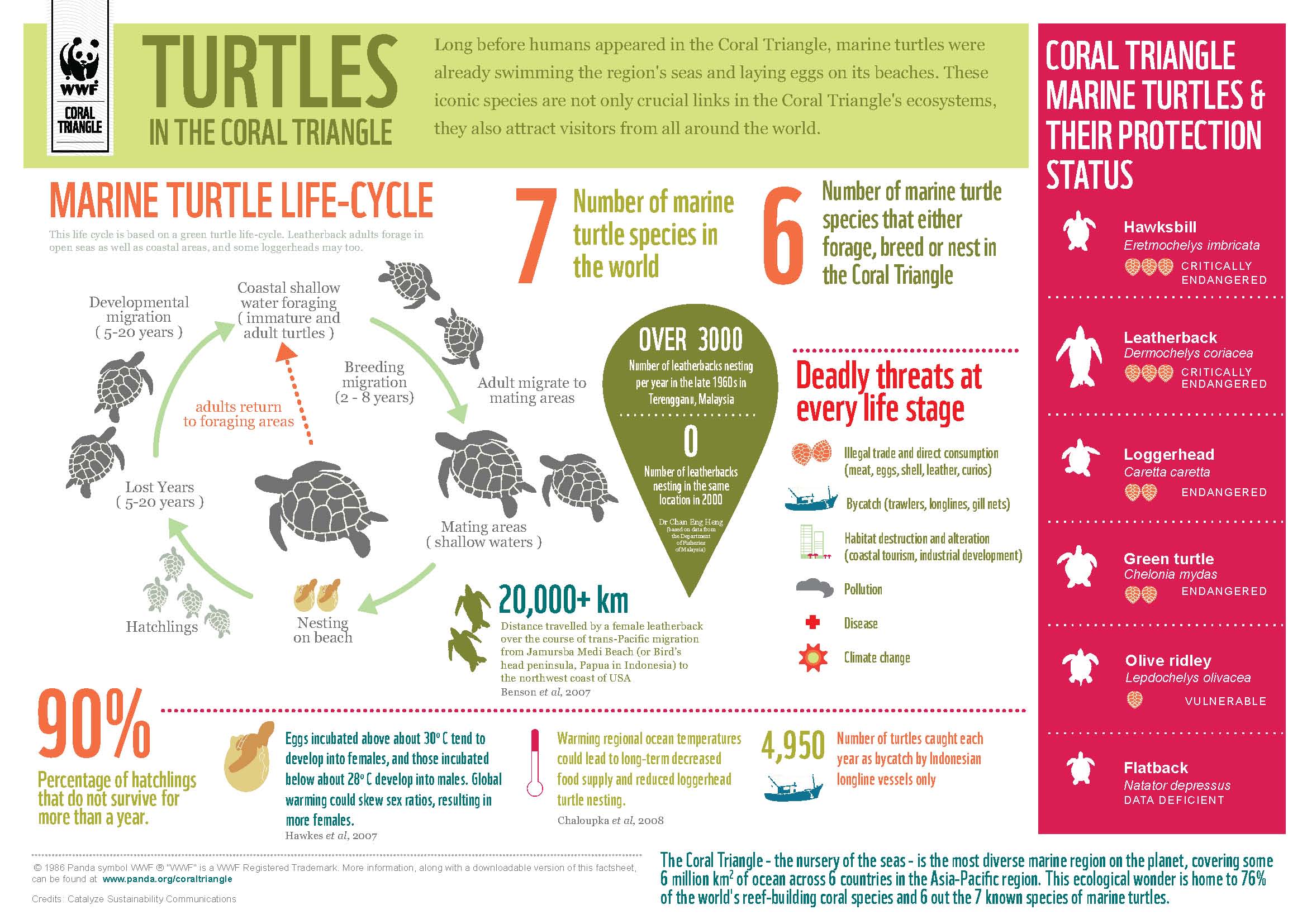After some research I scored a wonderful description of where the world’s most ecologically diverse marine ecosystem lies. Spanning over six countries this 6 million kilometers squared coral triangle is significant because it is home to six of the seven species of sea turtles. This infographic, produced by World Wildlife Fund, gives a rundown of the protection status of each the sea turtle species as well as a wealth of other great information. For instance, did you know …
… 3000 leatherback sea turtles nested along the coast of Terengganu, Malaysia in 1960? In 2000, according to data from Dr. Chen Eng Heng with the Department of Fisheries in Malaysia, there were none.
… 90% of sea turtle hatchlings never make it to their first birthday.
Take a closer look at the infographic to learn more. Lastly, don’t forget May 23rd is International Turtle Day!















What people are saying …